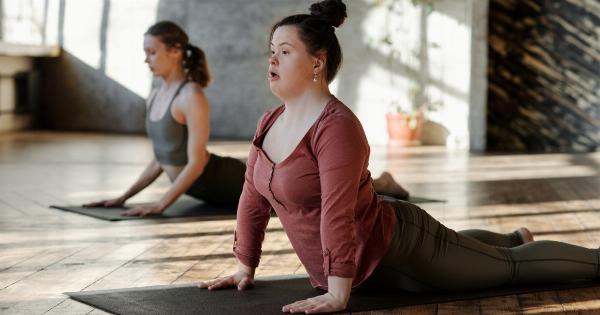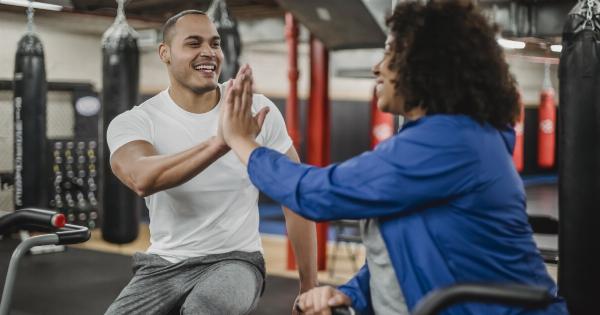As we age, it’s natural for our muscles to weaken and lose their tone. However, by incorporating regular strength training exercises into our routine, we can build muscles and enjoy a more youthful appearance and better overall well-being.
In this article, we will explore the various benefits of building muscles and discuss the most effective exercises and strategies to achieve a younger and healthier physique.
The Benefits of Building Muscles
1. Enhances Physical Appearance.
Regular muscle-building exercises can help you develop a more toned and defined physique. With increased muscle mass, you can achieve a well-proportioned body shape and a more youthful appearance.
2. Boosts Metabolism.
Building muscles can significantly increase your metabolic rate, even when you’re at rest. This means that your body will burn more calories throughout the day, making it easier to maintain a healthy weight or lose excess pounds.
3. Improves Bone Health.
Strength training exercises place stress on your bones, which stimulates the production of new bone tissue. By building muscles, you can increase bone density and reduce the risk of osteoporosis, a condition common among older adults.
4. Enhances Joint Health.
Strong muscles provide better support to your joints, reducing the risk of injuries and conditions such as arthritis. Building muscles around joints can also alleviate joint pain and improve overall mobility.
5. Increases Strength and Endurance.
Engaging in regular muscle-building activities helps improve muscular strength and endurance.
Increased strength allows you to perform everyday tasks more efficiently, while enhanced endurance enables you to participate in physical activities for longer durations without feeling fatigued.
6. Boosts Mental Well-being.
Exercise, including strength training, releases endorphins, also known as “feel-good” hormones. These hormones help reduce stress, anxiety, and symptoms of depression.
Therefore, building muscles not only benefits your physical health but also contributes to positive mental well-being.
Effective Exercises for Building Muscles
1. Squats.
Squats are a compound exercise that targets multiple muscle groups, including the quadriceps, hamstrings, glutes, and core muscles. They can be performed with body weight or with additional weights such as dumbbells or barbells.
2. Deadlifts.
Deadlifts primarily target the muscles of the lower back, glutes, hamstrings, and quadriceps. They are excellent for building overall body strength and improving posture.
3. Bench Press.
The bench press is a highly effective exercise for building chest and arm muscles. It primarily targets the pectoralis major, triceps, and anterior deltoids. Start with lighter weights and gradually increase the resistance as you gain strength.
4. Lunges.
Lunges work your legs, glutes, and core muscles. They can be performed by stepping forward or backward, utilizing body weight or weights to increase resistance.
5. Shoulder Press.
The shoulder press targets the deltoids, which are the muscles responsible for the shape and strength of your shoulders. Perform this exercise using dumbbells or a barbell for optimal results.
6. Pull-ups.
Pull-ups are a challenging exercise that primarily targets the muscles in your back, biceps, and forearms. If you find it difficult to perform pull-ups initially, you can start with assisted pull-up machines or resistance bands.
7. Push-ups.
Push-ups engage multiple muscles, including the chest, shoulders, triceps, and core. They can be modified based on your fitness level, making them suitable for beginners as well.
8. Planks.
Planks are an excellent exercise for strengthening your core muscles, including the abdominal muscles and obliques. They also engage the muscles in your arms, legs, and glutes, providing a full-body workout.
9. Bicep Curls.
Bicep curls isolate and strengthen the bicep muscles. You can perform them using dumbbells, resistance bands, or cable machines.
10. Tricep Dips.
Tricep dips primarily target the tricep muscles, located at the back of your upper arms. They can be performed using a bench or parallel bars.
Strategies for Building Muscles
1. Progressive Overload.
To stimulate muscle growth, it is essential to gradually increase the resistance or load you lift. This can be achieved by adding more weight, increasing repetitions, or reducing rest time between sets.
2. Balanced Diet.
A well-balanced diet is crucial for muscle growth. Ensure you consume an adequate amount of protein, healthy carbohydrates, and good fats.
Protein-rich foods such as lean meats, fish, eggs, and legumes are particularly important for muscle repair and growth.
3. Sufficient Rest and Recovery.
Muscles need time to recover and repair after intense workouts. Aim for 48-72 hours of rest between training the same muscle groups to allow sufficient recovery time.
4. Consistency.
Building muscles requires consistency in both exercise and diet. Set a regular schedule and stick to it, ensuring you exercise all major muscle groups at least twice a week.
5. Warm-up and Stretching.
Prior to each workout, warm-up exercises and stretching routines are essential. Warming up prepares your muscles for the upcoming workout, while stretching helps improve flexibility and prevents injuries.
Conclusion
Building muscles not only enhances your physical appearance but also offers numerous health benefits.
Regular strength training exercises, coupled with a balanced diet and proper rest, can help you look and feel younger, improve bone density, boost metabolism, and achieve a stronger and more toned physique. Remember to consult a healthcare professional or a certified trainer before starting any new exercise routine, especially if you have any underlying health conditions.




























